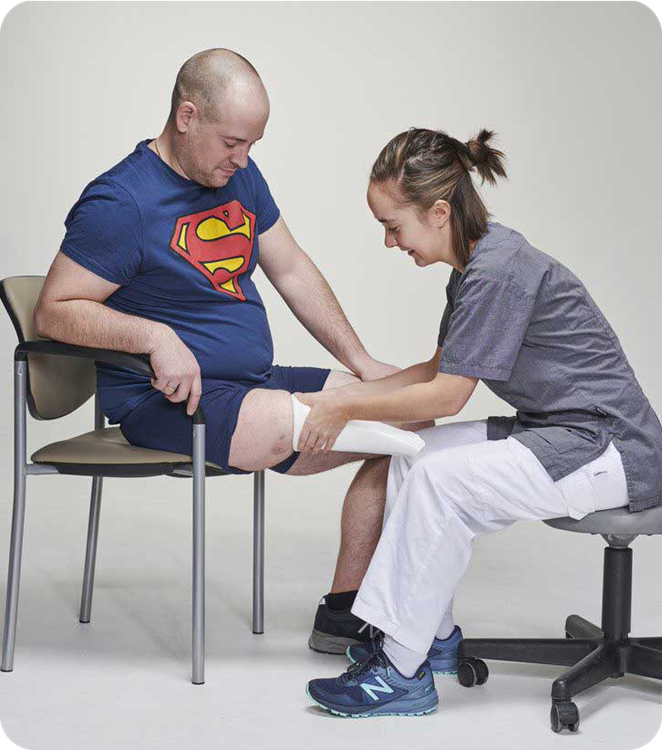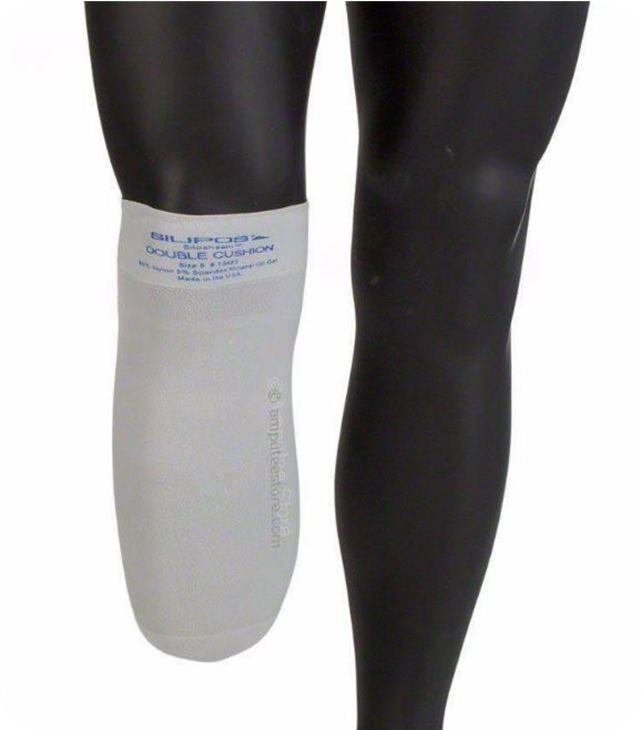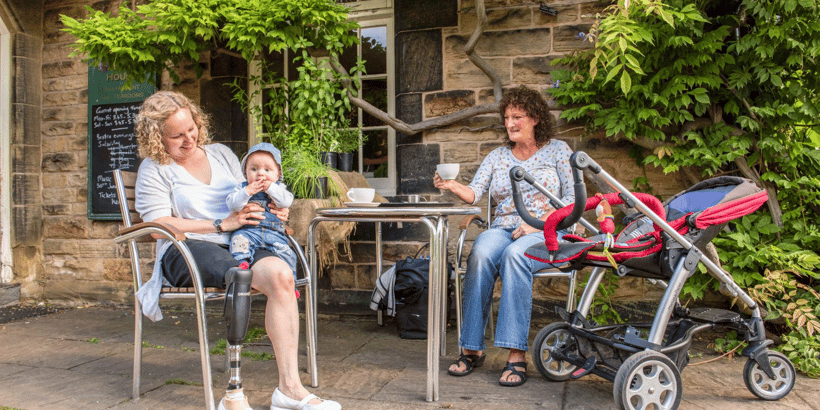Residual Limb Socks
Residual limb socks need to be worn on your residual limb next to your skin to help protect it and also to make your artificial limb (prosthesis) more comfortable by providing some cushioning and helping to absorb perspiration. You will be given a supply of residual limb socks when you receive your artificial limb.
Types of Residual Limb Socks
Residual limb socks come in different lengths (often identified by a coloured band around the top edge). The thickness also varies.
- Terry Towelling socks – These have a fairly thick pile inside.
- Cotton socks – These are half the thickness of the terry towelling socks.
- Nylon socks – These are very thin and many people with amputations find them comfortable to use next to the skin. They are more often used over the soft foam liner to make it easier to slip into the plastic socket or to pull the liner out of the socket when removing the artificial limb.
- Woolen socks – These are the thickest socks and are most commonly used by people with amputations who are well established with their artificial limb before terry towelling socks were introduced. They are rarely provided to people who have newly had an amputation these days but can still be supplied to replace the ones currently in use.
Finding the Correct Fit
The number and type of socks you wear will depend on the size of your residual limb in relation to the socket. Generally, when your artificial limb is delivered to you, we try to make it a one-terry sock fit.
However, when you first start to wear your artificial limb, the number of socks you need to wear may vary from day to day or even at different times of the day. This is because the size and shape of your residual limb changes. Your residual limb changes for a variety of reasons, for example, during periods of hot or cold weather or if you are taking medication such as water tablets.
If your residual limb is swollen and the socket feels tight, you may have to reduce the number of socks you have on or change to a thinner variety. If your residual limb shrinks and the socket becomes loose, you may have to add another sock or change to a thicker one to help the artificial limb fit more comfortably.
Your prosthetist and physiotherapist will show you how to check how many and which type of socks you need to wear. If you are in any doubt or if you need to wear more than 3 thick socks (wool or terry) please contact your clinic for an appointment.
Caring for Residual Limb Socks
To make sure that your residual limb socks remain comfortable and do the job they are designed to do you will need to take care of them. Follow the advice below:
- Use a clean sock every day
- Avoid creases in the socks. Creases can make your skin sore.
- Do not pull the socks too tightly over the end of your residual limb as this can distort its shape and cause pressure on your residual limb.
- Do not darn or mend your socks, as the stitching may cause soreness of the residual limb. If socks become hard, uncomfortable, thin, or have holes, you should throw them away and use new ones.
- Not all socks are machine washable. Washing instructions come with the residual limb socks and you should follow these carefully to keep them in good condition and to make them last.
- If you are hand-washing your socks, use soap and lukewarm water. They should be rinsed completely in clean water and dried flat. Do not wring them out as this alters the shape.
- Terry socks are machine washable at 40°C. Spin dry only and then dry on a flat surface to retain their shape. Tumble driers may shrink your socks and make them uncomfortable. Fabric conditioners may irritate your residual limb.
Your Supply of Residual Limb Socks
When you get your first artificial limb you will be given some suitable socks. How long they last will depend on how well you wash and take care of them. If you need more socks you can ask for more at your next appointment, call in at the clinic or telephone the clinic receptionist and they can be posted out. Terry and cotton socks have a coloured band around the top elastic edge to indicate their length.
Residual Limb Shrinker Socks (Juzo™)
Residual limb shrinker socks are brown elastic socks worn when you are not wearing your artificial limb. These socks help your residual limb to keep its shape and reduce swelling. You will probably have been issued with a shrinker sock soon after your amputation.
It is important to remember to wear it when you are not wearing your artificial limb. Remember to bring your shrinker sock to your appointments so you can wear it if your artificial limb is in the workshop.
Not everyone will need to carry on wearing the shrinker sock and if we feel that you can safely stop using it, we will tell you. You will be given a residual limb shrinker after taking measurements of your residual limb. If you need a replacement, please contact your O&P office.
Gel Socks
Silipos™ or Dermasil ™ are a special kind of sock impregnated with gel on the inside. They are prescribed for people with amputations who have a particular problem with the residual limb. Not everyone will need one and it is not to be confused with a regular sock. Only your doctor or prosthetist can prescribe the socks for you and he or she will tell the reception staff which size you need.

If you follow the care instructions, last for between 2 and 3 months. They often go a yellow colour after a short time but don’t worry they are still fit for use. The discoloration is due to the mineral oils seeping out of the gel and is normal.
Hand-wash the gel sock every day with soap and water and, to dry it completely, lay it flat and allow it to air dry for 24 hours. The foam insert will help the gel sock keep its shape.
If you need replacements, telephone your prosthetist clinic, they will need to check with your prosthetist if the gel socks are still appropriate for you so please be patient.
The Blatchford Community
For over 130 years Blatchford has designed and produced some of the world's most advanced artificial limbs and mobility solutions. Learn more about resources available to help you and/or the amputee in your life!
